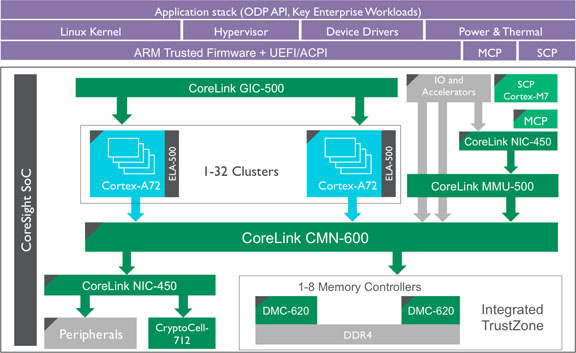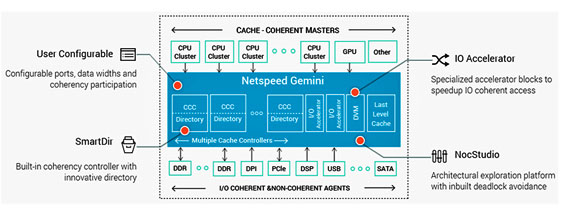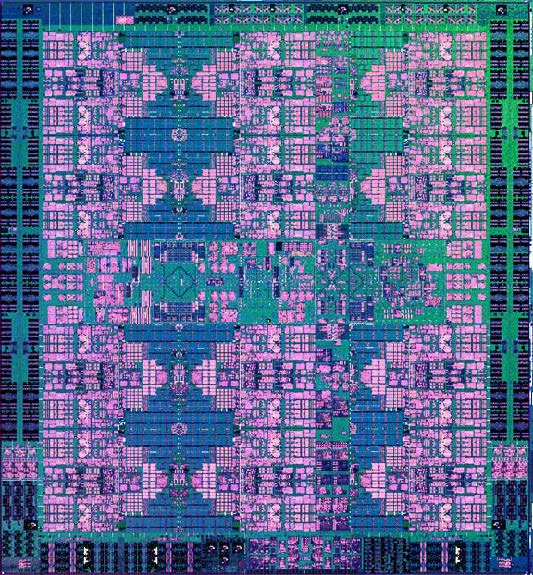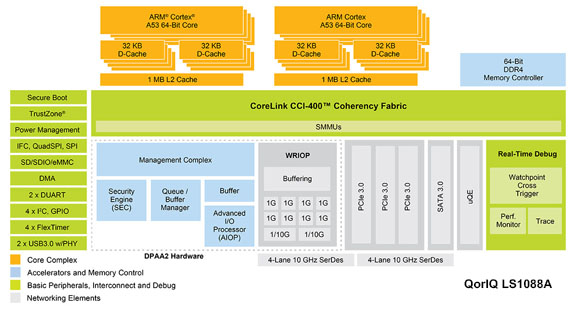By Jim Harrison
The first day of the Linley Processor Conference in Santa Clara covered a wide range of topics, including IoT security, 100-Gbit/s networks, virtualization, and SoC connectivity.
In Linley Gwennap’s keynote, he explained that wafer cost is rising rapidly for 28 nm and below and, in fact, transistor cost rose for the first time ever at 20 nm. Cost-sensitive products are staying at 28 nm because there is no big price/transistor gain at smaller notes — while they may still offer power and performance gains. He said that this is giving emphasis to specialized architectures that can improve performance/watt by 10 to 100 times. Numerous examples include the Cadence/Tensilica Xtensa LX7 and Microsoft Catapult.
Linley noted advancements in neural networks with Google’s ASIC for TensorFlow and a new chip from Wave Computing being announced on Wednesday. He also discussed ARM-based offerings of x86 alternative in servers with Applied Micro X-Gene 1 and 2 and Cavium ThunderX processors coming online and NXP now sampling QorIQ LS2 with up to eight Cortex-A72 cores.
Fergus Casey, senior R&D manager at Synopsys, discussed Protecting IoT Edge Devices From Malicious Physical And Software Attacks . These attacks may come from communication links, indirect attacks via remote nodes, and software attacks via malware, or privilege-level tampering. They may also originate as hardware attacks — either non-invasive (debug ports, side channel) or invasive (decapsulation, probing). Fergus noted that true random numbers are required for secrecy and privacy and weak RNGs bring predictability and vulnerability. Synopsys’s ARC processor uses the Trusted Execution Environment with memory and register integrity protection, side channel protection, and more via their SecureShield package.
Iisko Lappalainen, senior sales manager at MontaVista Software talked about Securing Edge Devices In The Latest Intelligent Networks . Software-defined networks (SDN) and network function virtualization (NFV) dynamically adjust the network capabilities and quality of service, which makes for a versatile system that may need specific security functions. MontaVista offers Linux Integrity Measurement Architecture (IMA) and Extended Verification Module (EVM) kernel facilities for this situation.
Marc Naddell, VP of MediaTek, presented a talk titled IoT With Deep Learning And Machine Learning Capabilities . Mediatek offeres the LinkIt 7687 IoT development board for power-efficient IoT devices with secure Wi-Fi connectivity and LinkIt 2523 for Bluetooth-connected wearables with fast and accurate positioning. They also have the Helio X20 processor that provides three clusters to handle different kinds of workloads simultaneously. It has 10 cores, including dual 2.5-GHz Cortex-A72’s and eight Cortex-A53’s, along with the Coherent System Interconnect and AXI memory bus sub-systems. The chip has an embedded sensor processor and a high-performance camera interface — plus deep learning capability.
Jeff Defilippi, senior product manager at ARM, talked about Building More Powerful Infrastructure SoCs from edge to cloud . Arm is introducing the CoreLink CMN-600 coherent mesh network IP and CoreLink DMC-620 dynamic memory controller IP. The coherent mesh network function can cut DDR4 interconnect+DMC static latency by 50% and yield 60% more bandwidth while using the same chip area. It works with ARMv8-A processors to share data between processors, accelerators, and I/O. The function uses AMBA 5 CHI (Coherent Hub Interface) interfaces and has a system cache adjustable from 0 to 128 Mbytes.

DMC-620 dynamic memory controller targets SoCs deployed in applications such as servers, high-performance computing, and networking. The enterprise-class DDR3/4 memory controller is said to offer the lowest memory latency 85−95% bandwidth utilization with random traffic bandwidth. It also has integrated ARM TrustZone and SECDED or symbol-based error correction.
Coherency: The New Normal in SoCs was the title of the talk given by Anush Mohandass, VP at NetSpeed Systems. Anush said the “new normal” autonomous driving and augmented reality mean an explosion in processing performance requirements.Netspeed is introducing the Gemini III processor IP for SoCs.

The Gemini can have up to 64 cache-coherent clusters for both the processor and accelerator cores, with deadlock detection and avoidance. It has distributed virtual memory support and a DMA engine. Anush also said the “Gemini enables SoC architects to implement designs that can achieve more than ten times greater performance in a reasonable power envelope.” The design is architected for functional safety.
Matthew Mangan, corporate applications engineer at Arteris, spoke on Implementing Cache-Coherent Hardware Acceleration for ADAS and Machine Learning . Arteris Ncore and FlexNoC interconnect IP connects coherent and non-coherent SoC designs for reduced system latency and programming simplicity.
The X-Gene 64-bit ARM Server-on-a-Chip for Cloud and Enterprise was discussed by Kumar Sankaran, associate vice president of software and platform engineering at Applied Micro. X-Gene 3 yields six times the performance versus current X-Gene family, with 1 Tbyte of memory per socket and 30% lower power. Sampling Q1 2017, the chip has 32 ARM v8 64-bit CPU cores running at up to 3 GHz, a GICv3 interrupt controller, and 42 lanes of PCIe Gen 3 with eight controllers.
Brian Thompto of IBM talked about the POWER9 — Processors for the Cognitive Era . The ICs have a new microarchitecture with a 120-Mbyte NUCA L3, 12 x 20-way associative regions, advanced replacement policies, and 7 Tbytes/s on-chip bandwidth.

The chip uses a Nvidia NVLink 2.0 for high bandwidth and has advanced CAPI 2.0 Coherent accelerator and storage attach (PCIe 4). It also features 25 Gbit/s interfaces. The device uses a 14-nm finFET process with 8.0 billion transistors and will be available Q2 2017.
Developing Flexible, Scalable, Programmable Network Elements With Customizable Search Engines was the topic of a talk by Michael J. Miller, VP of Technology at MoSys. The PSE-S30 monolithic IC for search and offload integrates serial interface, processors, and table memory. It has schedulers that manage external interface and PE execution and user-defined algorithms for LPM, exact match, wildcard match, and others. Commands can be functions, macro, or R/W. It offers 30-Gbit/s PHYs, a GigaChip Interface (GCI) Protocol, eight scheduling domains, 1 Gbit of fast memory, threaded processor engines, 32 cores (8 clusters of 4 PE) and comes in a FCBGA676 27 x 27-mm package.
Bart Stevens, VP of Product Management at INSIDE Secure, spoke on Layer 2 MACsec Security Solutions for 400 GE, FlexEthernet, and Beyond . A complete “secure architecture” must protect the data in process, protect access to data, protect data in transit, and protect data at rest. Stevens said industry needs to start integrating security into network equipment. The MACsec security standard (IEEE 802.1AE* & IEEE 802.1X) was designed to provide port-based security across LANs. End-to-end WAN security deploys MACsec across core networks and provider edge networks, virtual LAN connections between campus and branches, and data center interconnects. INSIDE Secure is introducing 400- and 500-Gbit/s security IP cores. The EIP-166 Multi-channel MACsec integrates the classifier, the rate controller, and the frame transform cores, plus buffers, etc.
Jay Walstrum, Senior System Architect at Micron, talked on Graphic Memory in Networking Designs. Deep buffer top of rack switches in data center networking often use 6 or 8 Gbytes of GDDR5, which is available in 8-Gbit chips starting this year and will have 16 Gbit in a few years. GDDR5X bandwidth is six times that of DDR5.
Solutions For Network Services at the Edge was the topic of Sam Fuller, head of solutions marketing at NXP Semiconductors. He said that virtual network functions (VNF) will be distributed throughout the network — not just in servers, but in premises, access point, and metro edge equipment. This will provide versatility and aid security. NXP offers five communications processors with NVF functions, topped by the LS2088A with eight 64-bit Cortex-A53 CPUs, eight 10-GigE ports, OVS Offload, 20 Gbits/s crypto, a packet-processing engine, and 30−45-W power consumption.

NFV and SDN Solutions for IoT and 5G Intelligent Networks was the title of a talk by Kin-Yip Liu, senior director at Cavium. Their OCTEON TX processor family has up to 48 custom ARMv8 cores. The upcoming ThunderX2 processor will have up to 54 custom ARM cores, up to six DDR4 memory controllers, improved RAS features, 10/25/40/50/100G Ethernet ports, next generation accelerators, SATAv3, and PCIe Gen3.
Advertisement





